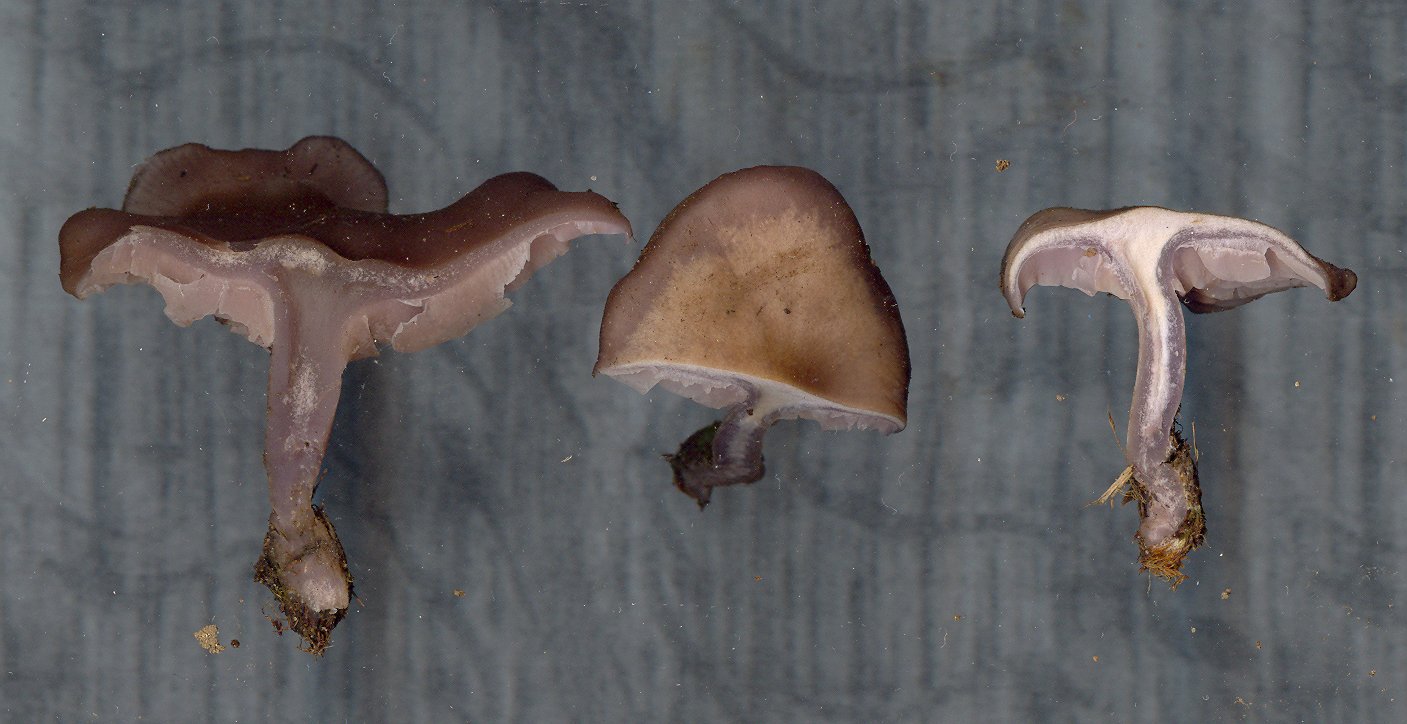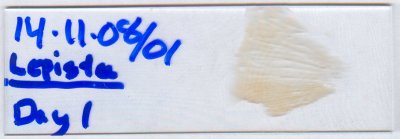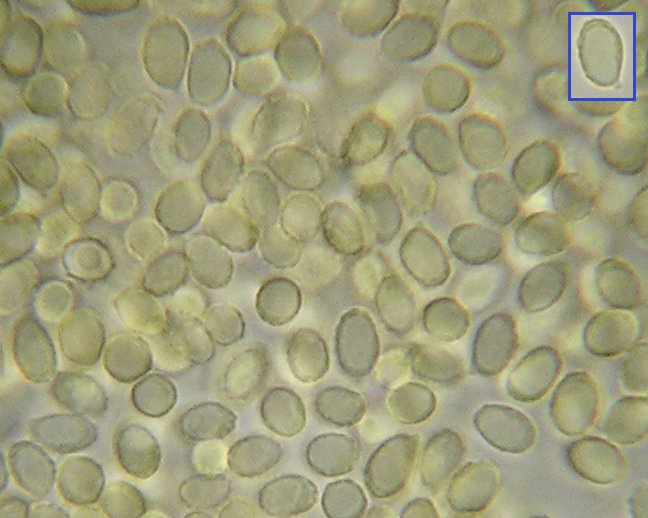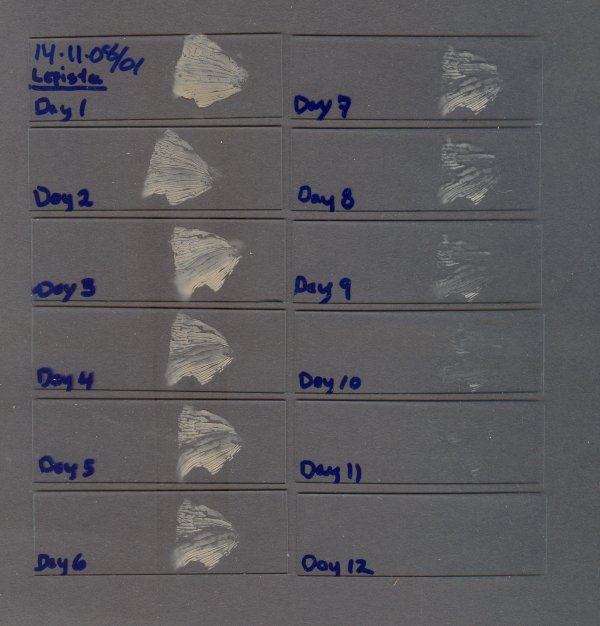DISCUSSION OF LEPISTA SORDIDA



When most mushrooms have vanished for the season and winter seems just a short time away you may be surprised to find dense patches of Lepista sordida growing in your lawn. It usually occurs so late in the season that you may not even be looking for mushrooms. Its pileus and stipe are soft and fleshy yet are able to withstand repeated freezings and thawings so the mushroom can go on producing healthy spore prints well into November. Like other species of Lepista, L. sordida produces a delicate pink spore print and finely roughened basidiospores.
The picture at right shows typical basidiospores of L. sordida. They are ellipsoidal and have walls that are clearly warty. The slight yellow colour is not characteristic of the species but is visible because the slide was prepared in Melzer's solution, a microscopist's mounting medium containing iodine. The inset in the upper right corner displays a basidiospore aligned exactly in lateral view, showing fairly clearly its bilateral symmetry, its roughened wall and small apiculus where it was originally attached to a basidium. You may spot several other lateral views among the many basidiospores in the rest of the picture. Because basidiospores often appear foreshortened when not lying flat on a microscope slide it can be difficult to measure them accurately. The most reliable way to do this is to measure the lengths of spores observed in lateral view. At times this can be frustratingly difficult. In the picture there are probably nearly 100 basidiospores visible, yet no more than 6 are oriented in a way that their length could be acurately measured.
In spite of its sordid name, Lepista sordida is an attractive mushroom. When young its pileus, stipe, flesh and gills are a striking lilac to violet colour. As they age the caps may take on a brown colour and begin to fade. The middle pileus at the top of the page has begun to fade rapidly from the centre toward the margin. This charcteristic type of fading is a common feature of many mushrooms, and ones that do it are said to be hygrophanous. Because of its purple colours, late appearance and lack of any association with trees L. sordida is fairly easy to identify. It is probably most similar to the closely related L. nuda, a purple mushroom that is also found in the fall. However, L. sordida is more slender than L. nuda and has more of a tendency to grow in clusters, as is seen in the photo on the main page.

The longevity of mushrooms varies considerably from species to species. Some seem to last only a day or two while others may be around for much longer. It is not always clear whether a mushroom that has been standing for a long time is still producing spores or is just inactive but slow to decompose. The picture at left is a visual record of how long L. sordida can remain active.
The fruiting bodies were collected from a lawn on the afternoon of November 11, 2008. A pie-shaped piece of the pileus of one of these was placed on a microscope slide labeled "Day 1" and kept in a covered container with a moist paper towel to maintain humidity. One day later the slide was removed, replaced with another one labeled "Day 2" and put back in the container with the same slice of mushroom. This process was repeated for two weeks. From the picture it can be seen that the mushroom gradually produced fewer and fewer spores over the two weeks. Although the slide for Day 12 doesn't appear to have any spores on it there were still some detectable with a micropscope. Days 13 and 14 yielded no spores and were not included in the picture.
Anyone could carry out this simple home experiment yet it yields some thought-provoking information. For example, why didn't the detached piece of mushroom decay? If you were to place a slice of tomato or apple in this situation for two weeks it would look quite bad at the end of the period, yet the slice of mushroom looked nearly as fresh at the end as it had at the beginning. Did it contain some kind of antibiotic that kept decay-causing bacteria and fungi at bay? We know that L. sordida is perfectly edible for humans so it can't have been severely toxic to a wide range of decomposers. It is also interesting that a detached piece of mushroom can continuously produce spores for two weeks, in spite of being cut off from any external source of nutrients. This indicates that the nutrients that had to go into the developing spores must have already been present in the tissues of the pileus. Would a fruiting body of this mushroom left growing in its natural habitat have produced more spores than our detached one? We simply don't have answers to these questions, even for a very common mushroom like L. sordida.
David Malloch
New Brunswick Museum